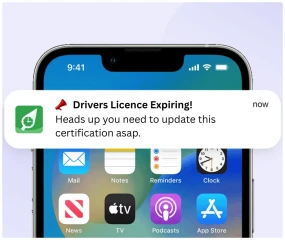"Work Smarter, Not Harder." Often, this phrase would have captured everyone's mindset at one point of time.
As companies are constantly searching for ways to gain a competitive edge in an era where customer satisfaction, excellence, and service delivery are up to high expectations,
One powerful strategy that is often ignored is workforce optimization.
WFO, or workforce optimization, is strategically managing your employees to enhance productivity, efficiency, and overall business success.
As new types of working started to pop up, like remote and online, which are currently trending past COVID, the need for WFO (workforce optimization) jumped into place.
When implemented correctly, WFO ensures that you have the right people with the right talents at the right time, resulting in efficient operations and delighted customers.
The Real Understanding of Workforce Optimisation
Workforce optimization (WFO) is a comprehensive strategy for increasing business efficiency, employee productivity, and management.
It integrates methods, techniques, and practices to ensure that the appropriate people are performing the appropriate tasks at the appropriate time.
This holistic approach helps organizations make the best use of their human resources, enhance operational efficiency, and improve customer service.
Basically, it covers all areas of managing and optimizing your employees' potential, from scheduling and training to performance evaluation and feedback.
Why Your Company Needs Workforce Optimisation
If Your Business wants to Enhance Productivity:
Workforce management tools and tactics assist organizations in streamlining their operations, resulting in improved productivity.
Businesses that optimize worker allocation ensure that tasks are distributed efficiently, reducing downtime and increasing overall output.
Around peak seasons, WFO helps firms determine whether they need to engage temporary staff or implement technology to help them deal with the increased labor demand.
If Your Business wants to Save Costs:
WFM (workforce management) helps reduce operating costs by allocating resources more efficiently.
You can avoid over-staffing or under-staffing by optimizing staffing numbers, resulting in significant savings for your company.
If Your Business wants to Improve Customer Satisfaction:
Workforce management software enables businesses to obtain a better understanding of their customers' habits and their ability to meet their demands.
With a well-optimized workforce, you can provide higher-quality service, greater customer satisfaction, and faster response times as well.
Happy and satisfied customers are the best and most loyal brand ambassadors.
If Your Business want to have an Effective Resource Allocation:
The tools can assist you in allocating your workforce resources where they are most needed.
You can guarantee that you have the correct workforce in place at the right time by recognizing peak demand hours and seasonal fluctuations.
If Your Business want to have the Best Compliance and Quality Assurance:
Compliance with industry standards and regulation is essential for every business.
Workforce management systems can monitor and record interactions to assure compliance, as well as provide quality assurance and continuous improvement tools.
Roster Software playa a crucial role in in workforce optimisation by helping companies in efficiently creating, managing, and maintaining staff schedules and rosters.
The Key Roles That Roster Software Plays Are:
Scheduling:
Organisations can use roster software to establish efficient work schedules based on characteristics such as staff availability, skill capabilities, and labour rules.
It automates the process of matching the right people to the proper shifts, saving time and effort in the scheduling process.
As a result, human resources are allocated more efficiently.
For example, during During Christmas season, managers can create, adapt, and communicate shifts using simple interfaces and real-time updates, ensuring teams perform properly during busy periods.
Communication and Real-time Updates:
Many roster software solutions that include communication tools allow team members to engage easily, share vital updates, and stay on the same page.
The features include the ability to request shift changes, receive immediate notifications about any scheduling changes, and swap shifts.
These traits are especially important for hourly teams in order to maintain teamwork.
Data Analysis and Reporting:
Data on scheduling trends, staff performance, and other relevant indicators is often collected using roster software.
This information can be evaluated to find trends and areas for improvement, resulting in more informed decision-making.
The software processes vast amounts of data, providing insights that guide workforce strategies and help achieve objectives.
Workforce Forecast:
Advanced and the best roster software always incorporate predictive analytics to forecast future staffing needs based on past performance and data.
This can help companies manage their staff members more effectively and prepare for seasonal fluctuations or business development.
Time Tracking:
Accurate recording of hours worked is critical for maintaining smooth operations and appropriately paying employees.
RosterElf offers a top solution, assisting businesses in keeping a clear record, minimizing discrepancies, and handling overtime situations precisely.
Workplace Compliance:
Organizations use roster software to help them comply with labour laws, union agreements, and industry-specific rules.
It can track and manage aspects including overtime, break times, and rest intervals to ensure that scheduling methods are standard and legal.
This reduces the risk of labour-related issues and penalties.
Skills-Matching:
Critical for ensuring that employee talents are suitably matched to positions or projects.
Businesses may distribute jobs more effectively by recognizing each individual's skills and talents, resulting in increased productivity and employee happiness.
Mistakes to avoid
- Poor communication with staff members can result in miscommunication, decreased involvement, and bad morale.
- Employee skills should advance together with enterprises. Sustaining industry changes requires ongoing training.
- Confusion and inefficiency might result from unclear and unmeasurable workforce optimization goals. Make sure your goals are time-bound, relevant, measurable, achievable, and specific (SMART).
- Although methods and equipments are crucial, people should also be taken into consideration. Gather opinions frequently and act upon it.
- While it's important to watch your spending, postponing away useful technology can end up costing more in the long run in terms of efficiency.

It's time to accept workforce optimization as a crucial element of your business strategy if you're searching for methods to maintain your competitive edge and improve company accomplishments.
Get the right software, put your team members through training, and enjoy the advantages of having a productive workforce.
Recall that it is essential to adapt and optimize your staff in the always-changing business landscape.
Put workforce optimization first to stay ahead of the competition and realize your company's full potential.



